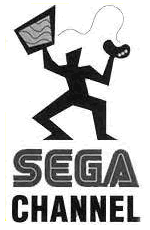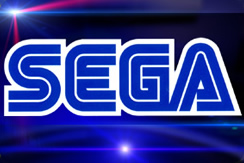Long before there was Xbox Live or the Playstation Network, Sega was already unfolding plans to bring its games to consumers over a mass network. The Sega Channel was an ambitious plan to allow cable subscribers to get special access to all kinds of goodies not available in stores, including demos of unreleased titles like Pulseman and Mega Man: The Wily Wars. Though the service never really took off, it was a landmark venture that set the stage for the online services we know today.
 At the forefront of this new technology was Chris Bergstresser, a Sega production manager and member of a team that not only dealt with the Sega Channel but also handled all third party publishing agreements and software approval. His job was to get the new cable service up and running, as well as work with publishers to keep the Genesis stocked with quality games. That’s as cool as it is stressful, when you think about it.
At the forefront of this new technology was Chris Bergstresser, a Sega production manager and member of a team that not only dealt with the Sega Channel but also handled all third party publishing agreements and software approval. His job was to get the new cable service up and running, as well as work with publishers to keep the Genesis stocked with quality games. That’s as cool as it is stressful, when you think about it.
Bergstresser has long since left Sega, and after stints as a senior vice president at such companies as Climax Konami and Atari, he now runs Vector Entertainment, a company that specializes in bringing safe online gaming to children.
Sega-16 recently spoke with Mr. Bergstresser about his time at Sega and his work on the Sega Channel.
Sega-16: With Nintendo’s iron grip on licensing agreements lifted, more and more companies began to look to the Genesis to publish their software. How did the third party landscape look when you arrived at Sega?
Chris Bergstresser: Growing rapidly. Sega had partnered with this interesting company called Electronic Arts, and I feel that it was their sports titles that really propelled Sega to the top. Additionally, Sega wound up growing the third party test group at break-neck speed. It was a very fun time, but then came the 32X, followed by the Saturn… then the Sun set. It wasn’t a fun time.
Sega-16: Did you ever feel that major companies, like Capcom and Konami, weren’t supporting the Genesis with their AAA software? Many fans feel that the two giants made the Super NES their priority.
Chris Bergstresser: Japanese companies like Konami and Capcom focused on Nintendo because Japan remained their primary market, and Nintendo was the undisputed king. If they wanted to publish on Nintendo (NES), they didn’t publish much on the competition’s platforms. But that changed about 1993/’94 when the Genesis really became a global (not Japanese) leader, and with Europe and the U.S. becoming a lot larger than Japan, Konami, Capcom and the others started to shift.
Sega-16: It’s been said that Sega grew to treat its third party licensees similar to how Nintendo did, which is ironic, given that Nintendo’s practices were what made Sega such an attractive partner to begin with. Is this true?
Chris Bergstresser: Partially true. Sega did try to use their “weight” a bit, but nowhere near what Nintendo used to do. Sega’s big issue was in the developer tools and support. With the Genesis, Sega bent over backwards to make easy-to-use tools, easy ability to publish on their platform, and incredible developer support. That changed with the Saturn. The machine was complicated – no one really knew what to do with the second chip. The development tools were expensive and unreliable, and developer support got sloppy.
 Sega-16: The Sega Channel was an immensely ambitious – and risky – project, especially since all previous attempts to bring consoles online had failed. How did the project get off the ground? Was there any resistance by Sega or TCI & Time Warner to do it?
Sega-16: The Sega Channel was an immensely ambitious – and risky – project, especially since all previous attempts to bring consoles online had failed. How did the project get off the ground? Was there any resistance by Sega or TCI & Time Warner to do it?
Chris Bergstresser: It worked incredibly well as the world’s first games-on-demand system. It was really starting to take off, but then came Playstation, and Sega did not have a strategy to go PC or use the online potential of the Saturn. It was more of a blown opportunity because of Sega’s inability to shift with the market and find alternatives for that business.
Sega-16: Besides the obvious limitations of the technology of the time, what were the biggest challenges in bringing an ambitious service such as the Sega Channel to life?
Chris Bergstresser: The tech was great. A whole Genesis game in less than one minute? That is still great by today’s standards. The biggest challenge was the changing market from 16-bit to 32-bit for console. Again, Sega had the opportunity to go to the PC with the Sega Channel, and they didn’t do it. Myself and others pushed incredibly hard and were told “no.”
Sega-16: Some titles were released on the Sega Channel that were never released at retail in the U.S., such as Pulseman and Mega Man: The Wily Wars. Was there ever, that you know, any plans to release these titles, or was the Sega Channel distribution just “testing the waters” so to speak for games that lamentably were later considered to not be viable for retail?
Chris Bergstresser: There were no plans. I took any title I could get my hands on, mostly completed titles, partially completed titles – anything. Publishers liked the model because they had no risk and got paid, so they opened their vaults to games they had no plans on releasing. There were times, however, where we tried to create an indie Sega label to try and publish some of the more popular Sega Channel titles. It didn’t happen.
Sega-16: What was your reaction when Sega of Japan announced that it would discontinue the Genesis in 1995?
Chris Bergstresser: I wasn’t surprised. They were left with huge Genesis inventories and a couple of messes (32X and Saturn). I believe they made deals with groups like Majesco, who repackaged the Genesis and sold it for a low, low price. It was successful for a while.
Sega-16: Was the impact of the decision immediately felt on the Sega Channel, or was there ever talk of continuing the service in some form for the Saturn?
 Chris Bergstresser: No. Publishers tried to cram games onto the Sega Channel for some short term revenue. AS I mentioned before, we tried to get the Sega Channel to move to PC and Saturn but failed in our attempts.
Chris Bergstresser: No. Publishers tried to cram games onto the Sega Channel for some short term revenue. AS I mentioned before, we tried to get the Sega Channel to move to PC and Saturn but failed in our attempts.
Sega-16: In your opinion, why wasn’t the Sega Channel more successful? Was it due to the price, technology, timing, or something else? A combination of factors, perhaps?
Chris Bergstresser: The Sega Channel was a great service launched way too late. The tech was rock solid, the interface easy, and the games easy to download. Other issues involved were that full distribution took way too long, so launching late coupled with not getting widely distributed quickly was a killer. Also, and I say this time and again, if Sega took the time to get the service on PC and/or the Saturn, things might have been different.
Our thanks to Mr. Bergstresser for taking the time for this interview.

Recent Comments